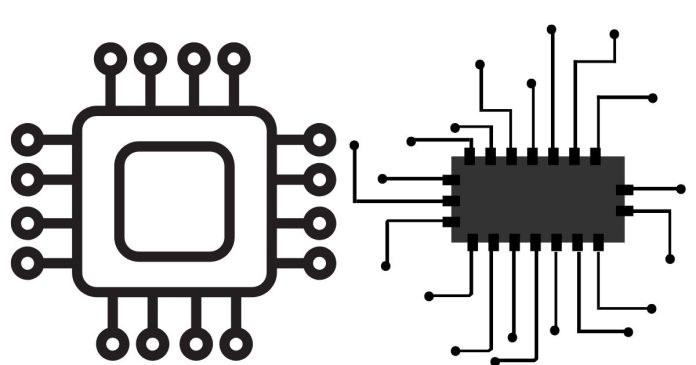The BIOS chip (Basic Input/Output System) is a crucial component in computers and other electronic devices that plays a vital role in the startup process and hardware management. As one of the first things activated when a device is powered on, the BIOS chip is responsible for initiating the system’s hardware and enabling the operating system to load. Over time, the role of BIOS has evolved, and newer systems now use a more advanced form called UEFI (Unified Extensible Firmware Interface), but the underlying principles and functions remain foundational to computer systems.
What Is BIOS?
The BIOS is a firmware—a type of software embedded directly into hardware—that is stored in a non-volatile memory chip on the motherboard of a computer or device. This software is executed during the power-on self-test (POST) process and is responsible for ensuring that all of the hardware components (such as the CPU, RAM, storage devices, and input/output devices) are functioning correctly before the operating system takes over.
When a user turns on their computer, the BIOS chip’s software runs the POST sequence to check that all essential components are working. After successful hardware initialization, the BIOS locates and loads the operating system from a storage device (such as a hard drive, SSD, or optical drive).
Key Functions of the BIOS Chip
- Power-On Self-Test (POST):
- One of the first functions the BIOS performs is the POST, where it checks the basic hardware components, such as the CPU, memory, keyboard, and storage devices, to ensure they are properly connected and functioning. If any component fails, the BIOS may display an error message or emit a series of beeps to indicate a problem.
- Bootstrap Loader:
- The BIOS contains a bootstrap loader, which is a small program that helps locate and load the operating system from a storage device (such as the hard disk or SSD) into the computer’s RAM. This is the process that allows your system to transition from hardware initialization to running the OS.
- Hardware Configuration and Management:
- The BIOS offers an interface (usually accessed by pressing a specific key like “F2” or “Del” during startup) known as the BIOS setup utility. Here, users can configure various hardware settings, such as boot order, system clock, CPU settings, memory timings, and security features like passwords and encryption. This customization is essential for the efficient and secure operation of the system.
- System Clock and Date Management:
- The BIOS is responsible for maintaining the system’s clock and date settings, even when the computer is powered off, by using a small battery called the CMOS battery. The CMOS battery helps the BIOS retain important settings such as time, date, and configuration preferences between reboots.
- Support for Peripheral Devices:
- The BIOS ensures that peripheral devices such as keyboards, mice, printers, and storage devices are properly initialized and ready for use. This interaction is critical for establishing basic input and output functions during the system’s startup.
How the BIOS Works
When the computer is powered on, the BIOS performs a series of critical tasks to get the system up and running:
- Initial Hardware Check (POST):
- The BIOS checks that critical components like the processor, memory, storage devices, and display are functioning and properly connected.
- Boot Sequence:
- After POST, the BIOS looks for the operating system. It checks the boot devices (hard drives, SSDs, USB drives) in a predetermined order (which can be configured by the user in the BIOS setup) to find a device containing a bootable OS.
- Operating System Handoff:
- Once the BIOS locates a bootable device and successfully loads the OS, control is handed over to the operating system, which begins its own initialization and management processes.
BIOS vs. UEFI
While the BIOS chip and its associated software have been around since the early days of personal computers, modern systems often use a more advanced interface called UEFI (Unified Extensible Firmware Interface), which is a more modern and flexible replacement for the traditional BIOS.
- UEFI vs. BIOS:
- UEFI provides several advantages over the older BIOS system, including faster boot times, larger storage device support (more than 2.2 TB), a more user-friendly graphical interface, and enhanced security features like Secure Boot. UEFI systems can also support both 32-bit and 64-bit environments, whereas BIOS is typically limited to 16-bit code execution.
- BIOS Limitations:
- Traditional BIOS systems are limited in their ability to handle modern technologies, such as large storage devices, high-resolution graphics, and faster boot times. These limitations led to the development of UEFI, which addresses many of these shortcomings.
Despite UEFI being the modern standard, many systems today still refer to their firmware as BIOS, as it retains the legacy name.
The BIOS Chip: Location and Characteristics
The BIOS chip is typically located on the motherboard of a computer or device. The chip is a small, non-volatile memory component, often in the form of an EEPROM (Electrically Erasable Programmable Read-Only Memory) or flash memory, which allows it to be updated or modified without physically removing or replacing the chip.
In most computers, the BIOS chip is soldered onto the motherboard, but in some cases, it can be a removable component that can be replaced or updated easily. The ability to update the BIOS is important, as manufacturers may release updates to fix bugs, improve hardware compatibility, or enhance security features.


